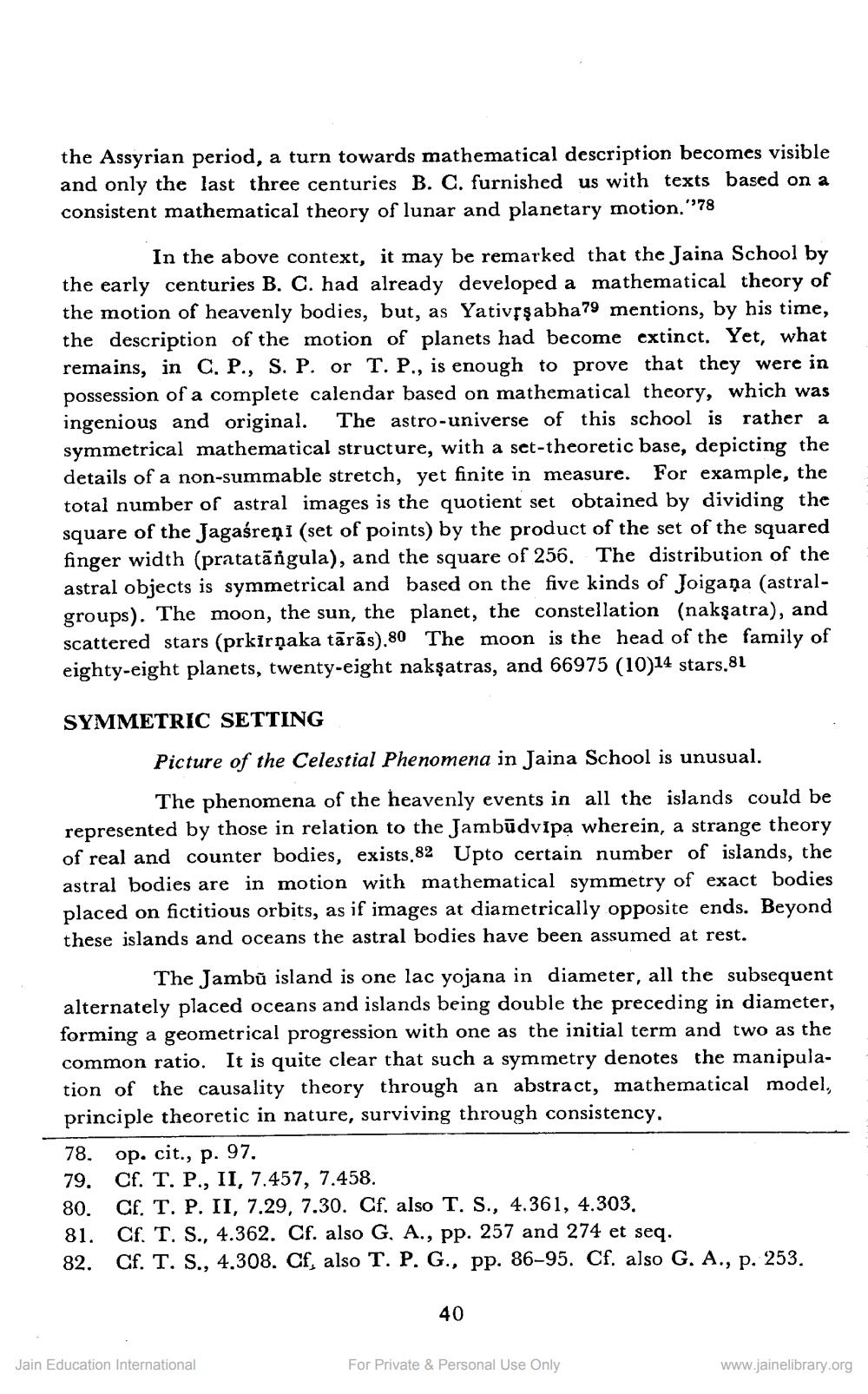________________
the Assyrian period, a turn towards mathematical description becomes visible and only the last three centuries B. C. furnished us with texts based on a consistent mathematical theory of lunar and planetary motion,"78
In the above context, it may be remarked that the Jaina School by the early centuries B. C. had already developed a mathematical theory of the motion of heavenly bodies, but, as Yativrşabha79 mentions, by his time, the description of the motion of planets had become extinct. Yet, what remains, in C. P., S. P. or T. P., is enough to prove that they were in possession of a complete calendar based on mathematical theory, which was ingenious and original. The astro-universe of this school is rather a symmetrical mathematical structure, with a set-theoretic base, depicting the details of a non-summable stretch, yet finite in measure. For example, the total number of astral images is the quotient set obtained by dividing the square of the Jagaśreņi (set of points) by the product of the set of the squared finger width (pratatăngula), and the square of 256. The distribution of the astral objects is symmetrical and based on the five kinds of Joigana (astralgroups). The moon, the sun, the planet, the constellation (nakşatra), and scattered stars (prkirņaka tārās).80 The moon is the head of the family of eighty-eight planets, twenty-eight nakşatras, and 66975 (10)14 stars.81
SYMMETRIC SETTING
Picture of the Celestial Phenomena in Jaina School is unusual.
The phenomena of the heavenly events in all the islands could be represented by those in relation to the Jambūdvipa wherein, a strange theory of real and counter bodies, exists.82 Upto certain number of islands, the astral bodies are in motion with mathematical symmetry of exact bodies placed on fictitious orbits, as if images at diametrically opposite ends. Beyond these islands and oceans the astral bodies have been assumed at rest.
The Jambů island is one lac yojana in diameter, all the subsequent alternately placed oceans and islands being double the preceding in diameter, forming a geometrical progression with one as the initial term and two as the common ratio. It is quite clear that such a symmetry denotes the manipulation of the causality theory through an abstract, mathematical model, principle theoretic in nature, surviving through consistency. 78. op. cit., p. 97. 79. Cf. T. P., II, 7.457, 7.458.
Cf. T. P. II, 7.29, 7.30. Cf. also T. S., 4.361, 4.303. 81. Cf. T. S., 4.362. Cf. also G, A., pp. 257 and 274 et seq. 82. Cf. T. S., 4.308. Cf, also T. P. G., pp. 86–95. Cf. also G. A., p. 253.
40
Jain Education International
For Private & Personal Use Only
www.jainelibrary.org




